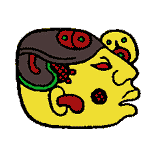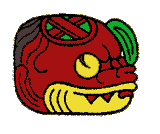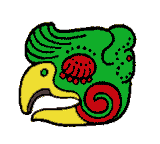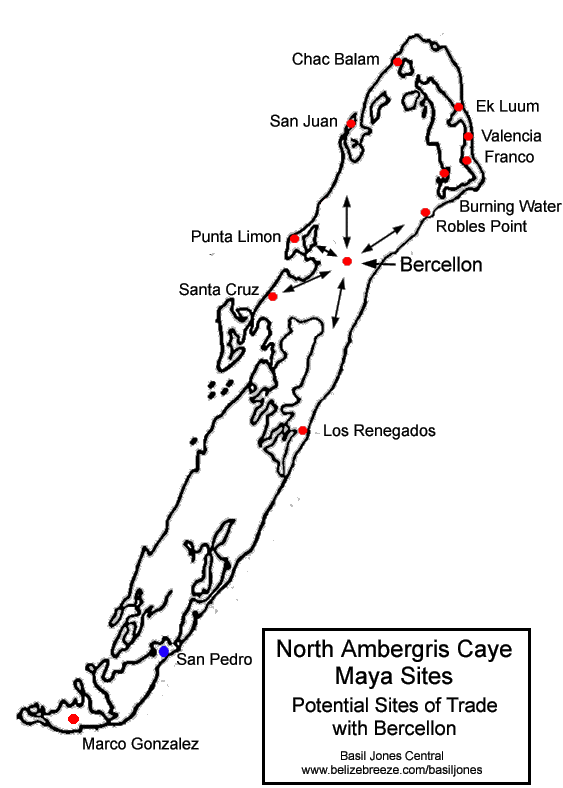|

The Maya at
Bercellon
 The
ancient Maya were the first known
inhabitants, of Ambergris Caye, Belize
and there are relics of many Classic and
Post-Classic settlements there. The
largest of these settlements is a
Late-Classic to Post-Classic site known
as Basil Jones or Bercellon (local
translation of Basil Jones). Calling the
site Bercellon differentiates it from the
larger Basil Jones area of Ambergris
Caye.
The
ancient Maya were the first known
inhabitants, of Ambergris Caye, Belize
and there are relics of many Classic and
Post-Classic settlements there. The
largest of these settlements is a
Late-Classic to Post-Classic site known
as Basil Jones or Bercellon (local
translation of Basil Jones). Calling the
site Bercellon differentiates it from the
larger Basil Jones area of Ambergris
Caye.
 South of Rocky Point and
Robles Point, in the island's
interior is the widest section of
Ambergris Caye, the land is much higher
and the deep black topsoil supports a
much different vegetation pattern. Here
is the Bercellon Maya Site, featuring a
number of low mounds crudely made from
local limestone and a network of stone
walls. The area is dotted with well
defined shell heaps and an abundance of
obsidian flakings, fragments of pottery
and an occasional jade ornament or object
carved in bone. There is also a lot of
fine charcoal, evidence of many of camp
fires.
South of Rocky Point and
Robles Point, in the island's
interior is the widest section of
Ambergris Caye, the land is much higher
and the deep black topsoil supports a
much different vegetation pattern. Here
is the Bercellon Maya Site, featuring a
number of low mounds crudely made from
local limestone and a network of stone
walls. The area is dotted with well
defined shell heaps and an abundance of
obsidian flakings, fragments of pottery
and an occasional jade ornament or object
carved in bone. There is also a lot of
fine charcoal, evidence of many of camp
fires.
 These limestone mounds are now nearly
destroyed by looting (see description
from visit to Bercellon), perhaps, even
by the work of Ambergris Caye's first
archaeologist, Thomas Gann. This British
physician, explorer and archaeologist is
famous for probing into nearly every site
in northern Belize. In the 1920s en route
to Belize City by boat, Gann made a stop
on Ambergris Caye to excavate the
'largest mound' on the northern
part of the island. In 1926 Gann writes
of what he found:
These limestone mounds are now nearly
destroyed by looting (see description
from visit to Bercellon), perhaps, even
by the work of Ambergris Caye's first
archaeologist, Thomas Gann. This British
physician, explorer and archaeologist is
famous for probing into nearly every site
in northern Belize. In the 1920s en route
to Belize City by boat, Gann made a stop
on Ambergris Caye to excavate the
'largest mound' on the northern
part of the island. In 1926 Gann writes
of what he found:
Several burial mounds were
excavated, in which bones were disturbed,
the skeletons lying on their backs... and
food offerings in pottery receptacles
provided for their journey into the next
world, indicating the usual method of
burial among these people. A second mound
was excavated, which had been built over
the ruins of a small stone chamber.
Nothing was found within it, but beneath
the center was discovered a round saucer
for burning incense, with a long handle,
and a curious figurine in clay, whose
face was covered by a peculiar grilled
arrangement, more resembling a baseball
mask than anything else, which was
studded with rosettes.
From their design and descriptions, these artifacts, have been generally accepted as Post-Classic. Because of this Bercellon has often been thought to be Post-Classic in origin.
 On the island, until the coastal areas
were abandoned, the Maya supported
themselves from the sea and engaged in
regular trade with other settlements
inland and along the coast. One theory
is, in the Post-Classic period as a
result of the dominance of the Putin, the
Maya moved into the interior and built
Bercellon. This is thought because of the
importance of Bercellon's network of
Post-Classic stone walls. These walls
surrounding the fertile Maya fields,
contain soil, unlike the rest of the
island and represent a major shift in the
island's economy, to farming and an
agricultural base as well as a definite
move away from trading and fishing.
On the island, until the coastal areas
were abandoned, the Maya supported
themselves from the sea and engaged in
regular trade with other settlements
inland and along the coast. One theory
is, in the Post-Classic period as a
result of the dominance of the Putin, the
Maya moved into the interior and built
Bercellon. This is thought because of the
importance of Bercellon's network of
Post-Classic stone walls. These walls
surrounding the fertile Maya fields,
contain soil, unlike the rest of the
island and represent a major shift in the
island's economy, to farming and an
agricultural base as well as a definite
move away from trading and fishing.
 At the end of the Classic period, north
of Bacalar Chico on the Tabasco coast,
the rise of the Putin (also known as
Putun) began. The Maya trade routes of
the time, long established, went up and
down the Yucatan coast, through the
Bacalar Chico, along the Ambergris Caye
coast, as well as the main Belize coast.
These routes were probably taken over by
the Putin and consolidated into their own
network. This could have forced all the
coastal sites, such as Chac Balam and San
Juan, to be abandoned, causing the Maya
to flee into the interior to Basil Jones,
where they built the settlement, and
became a farming economy. *
At the end of the Classic period, north
of Bacalar Chico on the Tabasco coast,
the rise of the Putin (also known as
Putun) began. The Maya trade routes of
the time, long established, went up and
down the Yucatan coast, through the
Bacalar Chico, along the Ambergris Caye
coast, as well as the main Belize coast.
These routes were probably taken over by
the Putin and consolidated into their own
network. This could have forced all the
coastal sites, such as Chac Balam and San
Juan, to be abandoned, causing the Maya
to flee into the interior to Basil Jones,
where they built the settlement, and
became a farming economy. *

Maya sites on Ambergris Caye with possible trade routes.
| | Another possibility is that Bercellon originated in the Late-Classic era. The ideal
farmland at Bercellon was noted by
hunters or overland traders when the Maya and
trading were at their peak, during the
Late-Classic period. The central
location was ideal for growing and
distributing agricultural products to the
thriving coastal sites, thus making
Bercellon an important hub for trade.
Then over time as the coastal areas came
under the influence of the Putin, from
the Tabasco coast, the coastal sites such
as Chac Balam and San Juan turned more
and more to Bercellon to make up for the
their diminishing access to the bounties
of the sea, eventually abandoning the
coast for Bercellon, but over a gradual
period.
|
 It had been thought that the Maya had
abandoned Ambergris Caye long before
Europeans arrived. However, a map
recently located in the Spanish archives
at Seville appears to indicate there was
a settlement on northern Ambergris Caye
in the general area of Basil Jones. Other
similar notations on the same map are of
colonial missions. Of course, where there
are missions, there must be Maya for the
friars to convert. So it is probable the
last Maya on Ambergris Caye were in the
Basil Jones area. This is reinforced by the mention
of migrant Maya living at Basil Jones
well into the Blake Dynasty Era.
It had been thought that the Maya had
abandoned Ambergris Caye long before
Europeans arrived. However, a map
recently located in the Spanish archives
at Seville appears to indicate there was
a settlement on northern Ambergris Caye
in the general area of Basil Jones. Other
similar notations on the same map are of
colonial missions. Of course, where there
are missions, there must be Maya for the
friars to convert. So it is probable the
last Maya on Ambergris Caye were in the
Basil Jones area. This is reinforced by the mention
of migrant Maya living at Basil Jones
well into the Blake Dynasty Era.
[ On to the Maya Site ] [
Back to the Top ]
[
Back to the Top ]
|
|